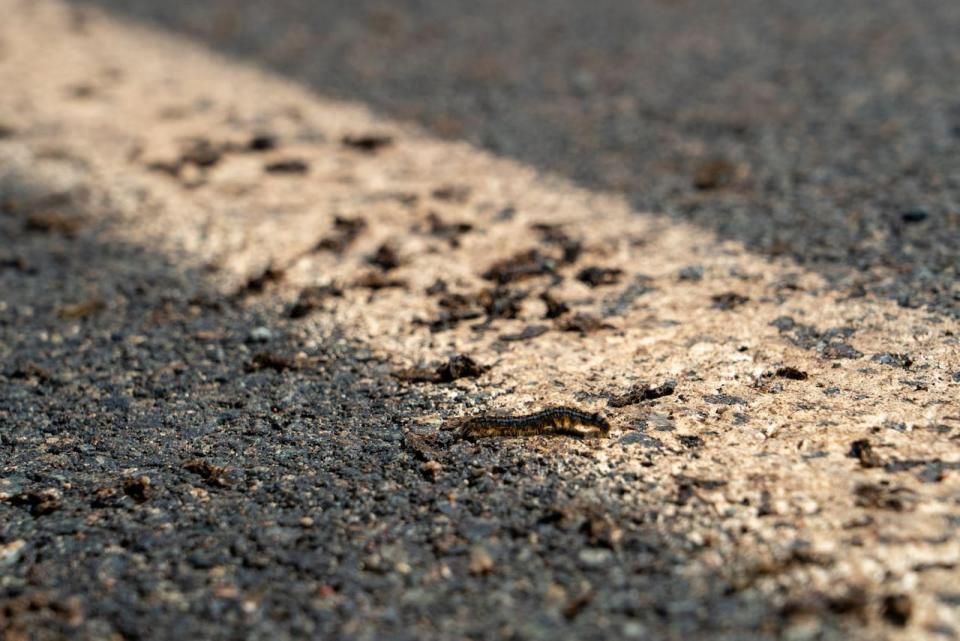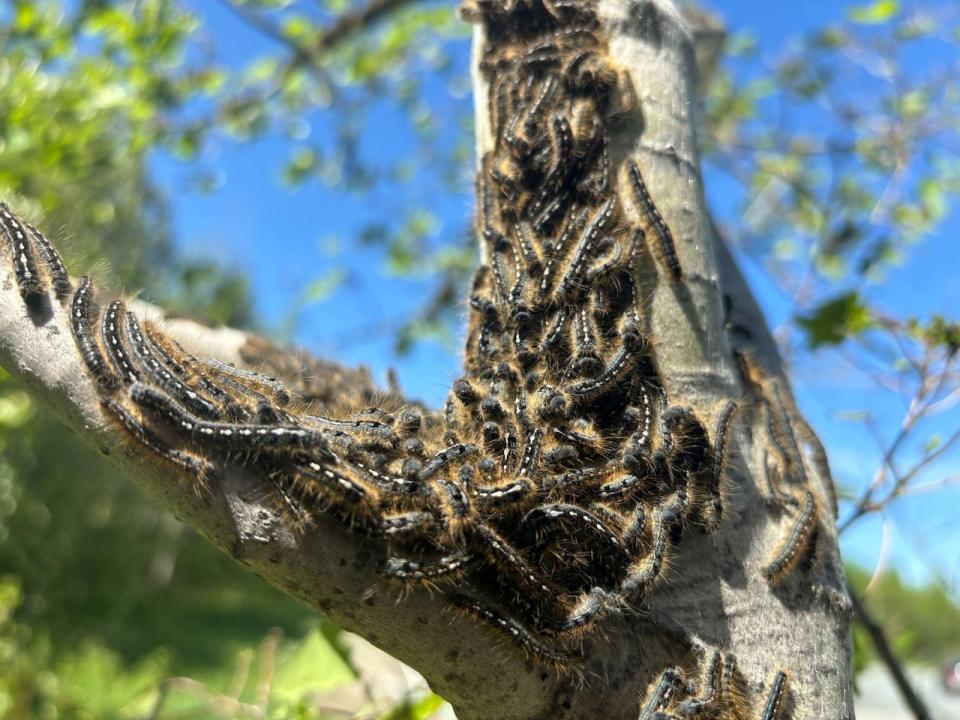New Quebec road hazard? The slippery, fuzzy tent caterpillar
Marie-Ève Carreau was driving on Highway 391 near Rouyn-Noranda, Que., this week when she rounded a curve, started to skid and rolled twice into the ditch.
Unharmed, Carreau emerged from her vehicle to inspect the road in northwestern Quebec, finding thousands of caterpillars across both lanes.
"It was sliding as if it was on ice but the road conditions were nice," said Carreau.
Tent caterpillars are infesting areas across the province this year, from Abitibi-Temiscamingue to Saguenay. Pictures on social media show houses, lamp posts and trees crawling with hundreds of caterpillars. Stretches of highways are the insects' latest target.

Transport Ministry sprays highway
Provincial police confirmed two cars went off the road in that area Wednesday because of the insects, and that they asked the Transport Ministry to intervene.
"The ministry's only option at the time was to spray the road," said Transports Quebec spokesperson Nicole Gaulin. "It's a little bit like winter, only thing is this is a little bit more particular."
She says for now, the ministry has not been made aware of any other concerning areas on the highway but encourages motorists to report dangerous stretches.

Christian Bélisle calls it an "epidemic."
"Last year, it was in Abitibi-Ouest. This year, the caterpillars seem to be more present in Rouyn-Noranda and Témiscamingue.… People have noticed." said Bélisle, a forestry protection technician with the Ministry of Natural Resources and Forests.
Such infestations are cyclical, occurring about every 10 years. The influx in the insects will continue for the next two or three weeks, says Bélisle, until the species spin their cocoons and transform into moths.
Possible link to Quebec's mild winter
The caterpillars are native to Quebec and peak in numbers every few years, followed by a couple of years of very low abundance, says André-Philippe Drapeau Picard, a research officer at the Montreal Insectarium.
"They tend to be in small groups," said Drapeau Picard. "Some people are disgusted by them because they are observed in high numbers."

He says there are "probably millions across the province" — including in areas like Montreal and the Eastern Townships.
"There might be an interaction between the mild winter we had and the natural cycle of the species," said Drapeau Picard.
"Last winter was not particularly cold.… So we could think that the winter mortality was very low for many insects."
He says it's the first time he has heard about the species causing issues on the highway. But he thinks they could be crossing the highway in an attempt to find a place to pupate and transform into moths.


